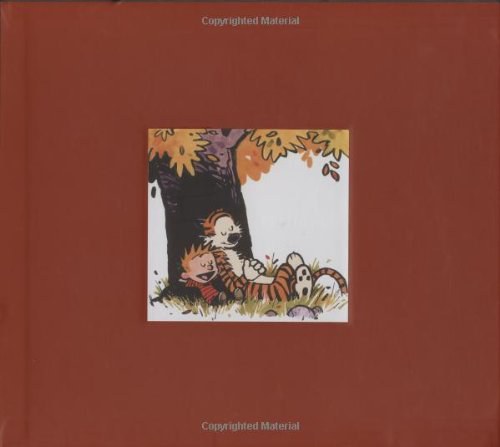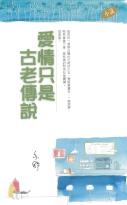
微积分和数学分析引论-第1卷
书刊介绍
微积分和数学分析引论-第1卷 内容简介
During the latter part of the seventeenth century the new mathe-matical analysis emerged as the dominating force in mathematics.It is characterized by the amazingly successful operation with infinite processes or limits. Two of these processes, differentiation and inte- gration, became the core of the systematic Differential and Integral Calculus, often simply called "Calculus," basic for all of analysis.The importance of the new discoveries and methods was immediately felt and caused profound intellectual excitement. Yet, to gain mastery of the powerful art appeared at first a formidable task, for the avail-able publications were scanty, unsystematic, and often lacking in clarity. Thus, it was fortunate indeed for mathematics and science in general that leaders in the new movement soon recognized the vital need for writing textbooks aimed at making the subject ac-cessible to a public much larger than the very small intellectual elite of the early days. One of the greatest mathematicians of modern times,Leonard Euler, established in introductory books a firm tradition and these books of the eighteenth century have remained sources of inspira-tion until today, even though much progress has been made in the clarification and simplification of the material.After Euler, one author after the other adhered to the separation of differential calculus from integral calculus, thereby obscuring a key point, the reciprocity between differentiation and integration. Only in 1927 when the first edition of R. Courant's German Vorlesungen iiber differential und Integrairechnung, appeared in the Springer-Verlag was this separation eliminated and the calculus presented as a unified subject.
%微积分和数学分析引论-第1卷 目录
Chapter 1 Introduction1.1The Continum of Numbe1.2The Concept of Function1.3The Elementary Functio1.4Sequences1.5Mathematical Induction1.6The Limit of a Sequence1.7Further Discussion of the Concept of Limit1.8The Concept of Limit for Functio of a Continuous VariableSupplementsS.1Limits and the Number ConceptS.2Theorems on Continuous FunctioS.3Polar CoordinatesS.4Remarks on Complex NumbePROBLEMSChapter 2The Fundamental Ideas of the Integral and Differential Calculus2.1The Integral2.2Elementary Examples of Integration2.3Fundamental Rules of Integration2.4The Integral as a Function of the Upper Limit (Indefinite Integral)2.5Lograithm Defined by an Integral2.6Exponential Function and Powe2.7The Integral of an Arbitrary Power of x2.8The Derivative2.9The Integral,the Primitive Function,and the Fundamental Theorems of the Calculus PROBLEMSChapter 3The Technipues of CalculusChapter 4Applicatio in Physics and GeometryChapter 5Taylor's ExpaionChapter 6Numerical MethodsChapter 7Infinite Sums and ProductsChapter 8Trigonometric SeriesChapter 9Differential Epuatio for the Simplest Types of VibrationList of Biograpical DatesIndex%微积分和数学分析引论-第1卷 节选
eface
During the latter part of the seventeenth century the new mathe-
matical analysis emerged as the dominating force in mathematics.
It is characterized by the amazingly successful operation with infinite
processes or limits. Two of these processes, differentiation and inte-
gration, became the core of the systematic Differential and Integral
Calculus, often simply called "Calculus," basic for all of analysis.
The importance of the new discoveries and methods was immediately
felt and caused profound intellectual excitement. Yet, to gain mastery
of the powerful art appeared at first a formidable task, for the avail-
able publications were scanty, unsystematic, and often lacking in
clarity. Thus, it was fortunate indeed for mathematics and science
in general that leaders in the new movement soon recognized the
vital need for writing textbooks aimed at making the subject ac-
cessible to a public much larger than the very small intellectual elite of
the early days. One of the greatest mathematicians of modern times,
Leonard Euler, established in introductory books a firm tradition .and
these books of the eighteenth century have remained sources of inspira-
tion until today, even though much progress has been made in the
clarification and simplification of the material.
After Euler, one author after the other adhered to the separation of
differential calculus from integral calculus, thereby obscuring a key
point, the reciprocity between differentiation and integration. Only in
1927 when the first edition of R. Courant's German Vorlesungen uber
Differential und Integralrechnung, appeared in the Springer-Verlag
was this separation eliminated and the calculus presented as a unified
subject.
From that German book and its subsequent editions the present
work originated. With the cooperation of James and Virginia McShaue
a greatly expanded and modified English edition of the "Calculus" wes
prepared and published by Blackie and Sons in Glasgow since 1934, and
distributed in the United States in numerous reprintings by Inter-
science-Wiley.
During the years it became apparent that the need of college and uni-
versity instruction in the United States made a rewriting of this work
desirable. Yet, it seemed unwise to tamper with the original versions
which have remained and still are viable.
Instead of trying to remodel the existing work it seemed preferable to
supplement it by an essentially new book in many ways related to the
European originals but more specifically directed at the needs of the
present and future students in the United States. Such a plan became
feasible when Fritz John, who had already greatly helped in the prepara-
tion of the first English edition, agreed to write the new book together
with R. Courant.
While it differs markedly in form and content from the original, it is
animated by the same intention: To lead the student directly to the
heart of the subject and to prepare him for active application of his
knowledge. It avoids the dogmatic style which conceals the motivation
and the roots of the calculus in intuitive reality. To exhibit the interac-
tion between mathematical analysis and its various applications and to
emphasize the role of intuition remains an important aim of this new
book. Somewhat strengthened precision does not, as we hope, inter-
fere with this aim.
Mathematics presented as a closed, linearly ordered, system of truths
without reference to origin and purpose has its charm and satisfies a
philosophical need. But the attitude
微积分和数学分析引论-第1卷 本书特色
The importance of the new discoveries and methods was immediately felt and caused profound intellectual excitement. Yet, to gain mastery of the powerful art appeared at first a formidable task, for the avail-able publications were scanty, unsystematic, and often lacking in clarity. Thus, it was fortunate indeed for mathematics and science in general that leaders in the new movement soon recognized the vital need for writing textbooks aimed at making the subject ac-cessible to a public much larger than the very small intellectual elite of the early days. One of the greatest mathematicians of modern times,Leonard Euler, established in introductory books a firm tradition and these books of the eighteenth century have remained sources of inspira-tion until today, even though much progress has been made in the clarification and simplification of the material. presented as a unified.
微积分和数学分析引论-第1卷 目录
Chapter 1 Introduction1.1The Continum of Numbe1.2The Concept of Function1.3The Elementary Functio1.4Sequences1.5Mathematical Induction1.6The Limit of a Sequence1.7Further Discussion of the Concept of Limit1.8The Concept of Limit for Functio of a Continuous VariableSupplementsS.1Limits and the Number ConceptS.2Theorems on Continuous FunctioS.3Polar CoordinatesS.4Remarks on Complex NumbePROBLEMSChapter 2The Fundamental Ideas of the Integral and Differential Calculus2.1The Integral2.2Elementary Examples of Integration2.3Fundamental Rules of Integration2.4The Integral as a Function of the Upper Limit (Indefinite Integral)2.5Lograithm Defined by an Integral2.6Exponential Function and Powe2.7The Integral of an Arbitrary Power of x2.8The Derivative2.9The Integral,the Primitive Function,and the Fundamental Theorems of the Calculus PROBLEMSChapter 3The Technipues of CalculusChapter 4Applicatio in Physics and GeometryChapter 5Taylor's ExpaionChapter 6Numerical MethodsChapter 7Infinite Sums and ProductsChapter 8Trigonometric SeriesChapter 9Differential Epuatio for the Simplest Types of VibrationList of Biograpical DatesIndex微积分和数学分析引论-第1卷 节选
eface
During the latter part of the seventeenth century the new mathe-
matical analysis emerged as the dominating force in mathematics.
It is characterized by the amazingly successful operation with infinite
processes or limits. Two of these processes, differentiation and inte-
gration, became the core of the systematic Differential and Integral
Calculus, often simply called "Calculus," basic for all of analysis.
The importance of the new discoveries and methods was immediately
felt and caused profound intellectual excitement. Yet, to gain mastery
of the powerful art appeared at first a formidable task, for the avail-
able publications were scanty, unsystematic, and often lacking in
clarity. Thus, it was fortunate indeed for mathematics and science
in general that leaders in the new movement soon recognized the
vital need for writing textbooks aimed at making the subject ac-
cessible to a public much larger than the very small intellectual elite of
the early days. One of the greatest mathematicians of modern times,
Leonard Euler, established in introductory books a firm tradition .and
these books of the eighteenth century have remained sources of inspira-
tion until today, even though much progress has been made in the
clarification and simplification of the material.
After Euler, one author after the other adhered to the separation of
differential calculus from integral calculus, thereby obscuring a key
point, the reciprocity between differentiation and integration. Only in
1927 when the first edition of R. Courant's German Vorlesungen uber
Differential und Integralrechnung, appeared in the Springer-Verlag
was this separation eliminated and the calculus presented as a unified
subject.
From that German book and its subsequent editions the present
work originated. With the cooperation of James and Virginia McShaue
a greatly expanded and modified English edition of the "Calculus" wes
prepared and published by Blackie and Sons in Glasgow since 1934, and
distributed in the United States in numerous reprintings by Inter-
science-Wiley.
During the years it became apparent that the need of college and uni-
versity instruction in the United States made a rewriting of this work
desirable. Yet, it seemed unwise to tamper with the original versions
which have remained and still are viable.
Instead of trying to remodel the existing work it seemed preferable to
supplement it by an essentially new book in many ways related to the
European originals but more specifically directed at the needs of the
present and future students in the United States. Such a plan became
feasible when Fritz John, who had already greatly helped in the prepara-
tion of the first English edition, agreed to write the new book together
with R. Courant.
While it differs markedly in form and content from the original, it is
animated by the same intention: To lead the student directly to the
heart of the subject and to prepare him for active application of his
knowledge. It avoids the dogmatic style which conceals the motivation
and the roots of the calculus in intuitive reality. To exhibit the interac-
tion between mathematical analysis and its various applications and to
emphasize the role of intuition remains an important aim of this new
book. Somewhat strengthened precision does not, as we hope, inter-
fere with this aim.
Mathematics presented as a closed, linearly ordered, system of truths
without reference to origin and purpose has its charm and satisfies a
philosophical need. But the attitude
相关推荐
-

小学生数学基础知识工具包
小学生数学基础知识工具包 内容简介 本书将小学数学基础知识按学习顺序和由易到难的原则进行编排,把某项知识按其自身的特点归为若干要点,对每个要点进行介绍、讲解,并...
-

TOEFL词汇(新东方)
TOEFL词汇(新东方) 本书特色 《新东方TOEFL词汇》是由西安交通大学出版社出版的。TOEFL词汇(新东方) 内容简介 本书堪称是目前*贴近toefl考试...
-

探索太空--地球科学(国家地理科学探索丛书)
探索太空--地球科学(国家地理科学探索丛书) 内容简介 如果你希望读到地道的英语,在享受英语阅读乐趣的同时又能增长知识、开拓视野,这套由外语教学与研究出版社与美...
-

六说文学教育
六说文学教育 本书特色 当今很多人缺乏独立阅读、深入思考、自由表达的能力与兴趣,这些问题的根源还在于教育,尤其是文学教育。从这个意义上说,人一辈子的道路,取决于...
-

马希文《数学花园漫游记》
《数学花园漫游记》讲述了:数学的花园很大,分成许多小区,这些小区叫做数学的分支。你学习的代数、几何,就是数学的分支。每一
-

蔡骏《西尔斯育儿经》
《西尔斯育儿经》告诉您,不必刻意观察,孩子就感受到我们太多的东西;不必刻意模仿,孩子就模仿了我们太多的态度。我们想怎样并
-

我之为我,只在异人处:众说木心
《我之为我,只在异人处:众说木心》内容简介:木心生前很在乎读者对自己作品的反应,他看重读者,也对他们寄予厚望。木心以卓尔不
-

小学生励志必读名人传记:贝多芬传
小学生励志必读名人传记:贝多芬传 本书特色 提供一天的食物,可以活一天;开垦田地,可以活一生;阅读伟人钴记,可以让孩子开创不凡的一生。18到19世纪的欧洲,出现...
-

2016-四大名师历年考研英语真题超详解及复习指导-(试卷版)2005-2015-考研红皮书
2016-四大名师历年考研英语真题超详解及复习指导-(试卷版)2005-2015-考研红皮书 本书特色 《2016四大名师历年考研英语真题超详解及复习指导(试卷...
-

学习的革命
学习的革命 本书特色 《学习的革命:通向21世纪的个人护照》(修订版)世界正在经历一次关键的转折,我们生活在一场会改变我们生活、思想、沟通、成功方式的变革中。《...
-

建筑构造-(第二版)
建筑构造-(第二版) 本书特色《建筑构造(第2版全国高职高专教育建筑工程技术专业新理念教材)》从高等职业教育的特点和培养高技能人才的实际出发,以民用建筑构造为主...
-

城南旧事
城南旧事 本书特色 《城南旧事》是著名女作家林海音以其七岁到十三岁的生活为背景的一部自传体短篇小说集,全书通过英子童稚的双眼对童年往事的回忆,讲述了一段关于英子...
-

经济法-2012年注册会计师考试考点蔡萃及记忆锦囊
经济法-2012年注册会计师考试考点蔡萃及记忆锦囊 本书特色 邓娟编著、东奥会计在线组编的《经济法(注册会计师全国统一考试辅导用书)——2012年注册会计师考试...
-

钢铁是怎样炼成的-语文必读经典名师解读
钢铁是怎样炼成的-语文必读经典名师解读 本书特色 经典与名著是人类文明的积累和文化思想的结晶,凝结了人类的智慧,对人类历史产生了重大的影响;经受了时间的考验,并...
-

挺住,别就差一点
《挺住,别就差一点》内容简介:本书成功只是一个结果,那是绽放给别人和自己看的。绽放前的过程才是自己必须要去经历的。任何时候
-

中国名校作文精品大全.小学高年级
中国名校作文精品大全.小学高年级 目录 明星小作家专辑明星小作家宫德禹专辑 苦咖啡 由圆想到的明星小作家唐昕专辑 **次观日出 深秋的小花园明星小作家张世奇专辑...
-
![[美] 德博拉·布鲁姆《孩子,怎样爱你才对》](http://oss.shudanhao.com/caiji/chazidian/2023/16580.jpg)
[美] 德博拉·布鲁姆《孩子,怎样爱你才对》
本书最大的特点是,它并不直接告诉家长应该如何养育孩子,而是以讲故事的方式告诉我们20世纪育儿观点的起起落落。本书通过20世纪
-

父与子-双语全彩珍藏版
父与子-双语全彩珍藏版 本书特色 《父与子》被誉为德国幽默的象征,是德国幽默漫画大师埃 奥 卜劳恩德作品,创作于 1934~1937 年,*初在《柏林画报》上连...
-

汽车构造
汽车构造 本书特色 本套教材按汽车结构的特点和维修分工的不同细分为发动机、发动机电控等18个分块。以上各个系统又按结构功能细分到部件,针对各部件在实际维修工作中...
-

2014-中药学专业(师)45天通关-全国卫生专业技术资格考试
2014-中药学专业(师)45天通关-全国卫生专业技术资格考试 本书特色 本书为2014年全国卫生专业技术资格考试中药学专业(师)辅导用书,由各学科资深专家精心...





